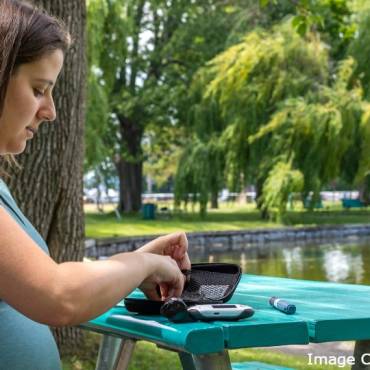Eating the right food at the right time along with exercise and insulin is important to manage Type 1 diabetes. Making the right choice of food for a meal is not just managing glucose levels for a couple of hours, healthy eating has a great impact in the long term for people with type 1 diabetes.
Healthy eating in patients with type 1 diabetes
Eating healthy is highly recommended and plays a significant role in preventing the development of diabetes associated problems. Eating a balanced diet containing a variety of different vegetables and fruits that will help to provide many essential nutrients as per body’s requirement.
Patients who have Type 1 diabetes have no insulin production in the body and require insulin injections on a daily basis to manage blood glucose levels. High sugar levels post meals can be harmful to the blood glucose levels remain high for longer periods. On the other hand, very low blood glucose levels due to fasting or longer intervals between meals can also damage body organs. Therefore, it is essential to follow a healthy diet and exercise routine to maintain appropriate levels of blood sugar. Don’t think you have to skip all sugar-containing foods and just eat raw foods. By following a proper diet and healthy routine, You can have most of the foods available. The key is to eat them in moderation.
Prefer eating healthy foods
If you are diagnosed with Type 1 diabetes, your first preference would be cutting down junk foods, fried food, and highly processed foods, since all of these have said to have a high glycemic index and can affect glucose levels in your bloodstream. Diabetes is one of the major risk factors many cardiovascular diseases including heart attack. Therefore, it is necessary to modify your eating habits to reduce the risk of diabetes associated complications.
Get enough fibre
Eating more fibre may help significantly in managing your blood glucose levels. You can have fibre-rich food such as fruits, vegetables, whole grains, and beans. Prefer using whole grain for making chapattis; it helps to keep your blood sugar at an appropriate level. High fibre foods (whole grains)are always better choices than low fibre foods such as white grains and processed sugary food items.
Low carbohydrate diet and type 1 diabetes
Carbohydrates are an important part of a balanced diet, but they have special importance for those with Type 1 diabetes because of the way carbohydrates are transformed into glucose in the body. They are considered as the quickest source of energy. But they directly influence blood glucose level, and people with type 1 diabetes will need to keep an eye on the quantity of carbohydrates and how quickly it is absorbed by the body. By reducing the number of carbs you have in your mealtime, you will lessen the chance of blood sugar spike just after having the meal.
Sugary foods
Eating sugar-rich foods don’t cause Type 1 diabetes, but sugar provides a hike in your blood sugar levels. So, it is important to keep your sugar consumption to a minimal level. Sugar-free foods are not recommended, but you can have them occasionally just to calm your sugar cravings.
Look for diabetes superfoods
Diabetes superfoods have a low glycemic index and are full of nutrients like fibre, magnesium, potassium, calcium, and vitamins. These foods include citrus fruits, tomatoes, sweet potatoes, dark green leafy vegetables, beans, fish, berries, fat-free milk, and yogurt.
Avoid eating high-fat meals
Avoid eating unsaturated fats you find in high-fat meals like regular ground beef, bacon, and full-fat dairy products. Eating unhealthy fat can contribute to the development of heart diseases. So make smart choices to lower the risk of life threatening disease.
People with type 1 diabetes can consult their diabetes consultant if they find difficulty in making dietary changes. Following a low carb diet may change your insulin dose, and this should be discussed with your health specialist before making changes.



